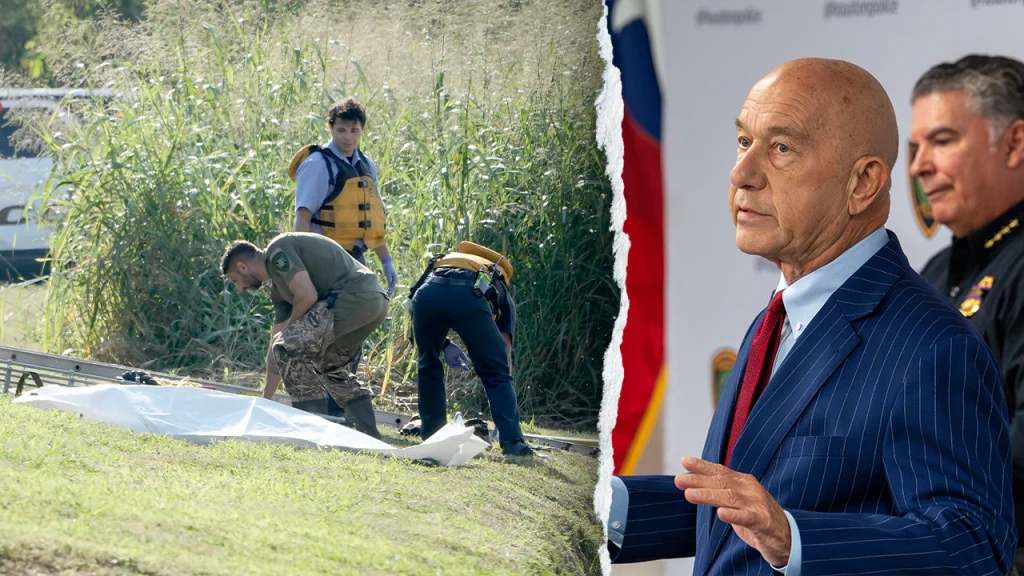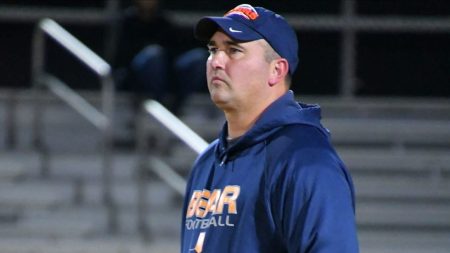The Mystery of Houston’s Bayou Deaths: Serial Killer Theory Persists
Despite Houston officials dismissing serial killer theories, a troubling pattern of unexplained deaths in the city’s bayou system continues to raise questions among families and investigators. Colman Ryan, a private investigator working with the family of 22-year-old Kenneth Cutting Jr., remains skeptical of official explanations. “They’re saying they don’t have a serial killer, but I’m not sure,” Ryan said in a recent interview. “Maybe their objective isn’t sexual assault. It’s not robbery. But they’re just throwing people in the bayou.” This year alone, sixteen bodies have been recovered from Houston’s 2,500 miles of bayous, creating a disturbing trend that has left families searching for answers while officials point to homelessness and substance abuse as likely explanations.
The case of Kenneth Cutting Jr. highlights the mystery surrounding these deaths. On June 28, 2024, Cutting was seen leaving Pete’s Dueling Piano Bar after an argument with a roommate. According to text messages sent to Cutting’s father around 2 a.m., his roommates claimed he had gone “crazy” and exited their vehicle on a highway outside town. Days later, his body was discovered in Buffalo Bayou, approximately a mile from where he allegedly left the car. What makes this case particularly puzzling is that the autopsy found no drugs in Cutting’s system, and the cause and manner of death were ruled “undetermined.” Ryan believes that accessing Cutting’s phone and location records could provide crucial information about his final hours, but authorities have yet to examine this digital evidence, further frustrating the family’s search for answers.
Another victim, 20-year-old University of Houston student Jade McKissic, was found dead in Brays Bayou days after she was last seen leaving a downtown bar on September 11. Ryan points out that neither McKissic nor Cutting fit the homeless profile that officials have suggested explains these deaths. “I think they’re too quickly dismissing it,” Ryan said, noting that neither victim showed signs of trauma. These inconsistencies have led family members and private investigators to question whether Houston officials are prematurely ruling out the possibility of foul play or even a serial killer targeting victims and disposing of bodies in the city’s waterways.
The Cutting family has raised numerous concerns about discrepancies in the autopsy report, which has only deepened their suspicions. Lauren Freeman, Cutting’s cousin, told reporters that the report initially referenced orthopedic hardware in his neck—something no family member was aware of, as Cutting had never undergone such surgery. When questioned, Freeman claims someone from the medical examiner’s office told her this was a “clerical error.” Additionally, the report listed Cutting’s height as 4 feet, 8 inches tall (when he was actually 5 feet, 3 inches) and his weight as 89 pounds—far below the approximately 115 pounds his father says he weighed when he disappeared. “To me, his credibility is shot,” Freeman said, referring to the medical examiner’s report, which has only fueled the family’s distrust of the official investigation.
Houston Mayor John Whitmire has publicly downplayed serial killer theories, attributing the bayou deaths primarily to homelessness and substance abuse issues within the city. However, this explanation has been met with skepticism from families of victims who don’t fit these profiles. The mayor’s office and the Houston Police Department have remained largely silent on specific questions regarding the Cutting case, refusing to respond to multiple media inquiries. This lack of transparency has created a vacuum where speculation thrives, particularly as families of the deceased continue to point out inconsistencies in official reports and what they see as a reluctance to thoroughly investigate potential connections between cases.
Criminal justice experts suggest that each case requires careful individual analysis, but acknowledge that the current situation presents significant investigative challenges. Joseph Giacalone, a retired NYPD sergeant and criminal justice professor, noted that “Each case has to be dissected on its own merits—timeliness, reinterviews and autopsy reports. Those reports and autopsies now come with a whole host of new problems.” As bodies continue to surface in Houston’s bayous, the question remains whether these deaths represent isolated incidents, as officials maintain, or if something more sinister connects them. For families like the Cuttings, the lack of clear answers and perceived inconsistencies in the official investigation only deepen their suspicion that the full story behind these tragic deaths remains untold, floating just beneath the surface of Houston’s murky waters.











